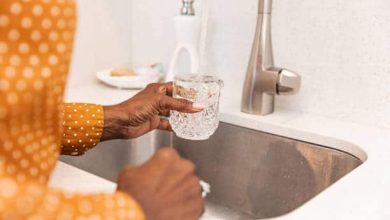5 RARE Symptoms of HIV & How to Beat Them!


If you or someone you know has HIV, you’re probably well aware of the problems it can cause. From the flu-like conditions of the acute stage to the infections of the chronic stage and the serious immune problems of AIDS, the progression of HIV comes with more than its fair share of struggles and challenges.
Fortunately, with a comprehensive lifestyle approach, proper medication, and a positive attitude, many people with the condition are living happy, healthy lives.
But did you know that other issues may crop up? Some that aren’t as common as the symptoms we’ve come to understand?
If you aren’t familiar with some of the rare symptoms and conditions of HIV, now’s the time to get informed.
Here are five rare issues of HIV, and what you can do to beat them!
1. Lipodystrophy
A condition where your body fat is abnormally distributed, lipodystrophy can cause significant changes in your appearance. This can lead to fat loss on the face, as well as in your appendages, your abdomen, your breasts, and even the back of the neck.
If you start noticing a hollowed sunken look in some parts of your body and a bloated, protruding look in other parts, it may be lipodystrophy. Your best bet to defeating this condition is through antiretroviral therapy (ART). Getting consistent exercise and eating better are also obviously important. In some cases, cosmetic surgery may be effective. This could include things like fillers and liposuction.
2. HIV-Associated Nephropathy (HIVAN)
Nephropathy means damage or disease of the kidneys. So, HIVAN is just damage/disease brought on by unregulated challenges from HIV. You will typically notice this disease through swelling of your feet, ankles, and legs. Your bathroom habits may also change. For instance, you may urinate less and when you do urinate it may come out foamy.
There are various ways to overcome HIVAN. Firstly, you should get regular kidney function tests. As with lipodystrophy, antiretroviral therapy (ART) is also useful, helping to prevent HIVAN from ever developing. Meds such as ACE inhibitors and ‘receptor blockers’ are also effective, so be sure to ask your healthcare team about those.
As for lifestyle modifications, consider things like lowering your blood pressure, eating better, and taking supplements for your kidneys, such as CoQ10, Omega-3s, B vitamins, and probiotics.
RELATED: 13 HIV Symptoms that Look Like Something Else
3. Bacillary Angiomatosis
A bacterial infection, bacillary angiomatosis typically leads to skin lesions and full-body or systemic symptoms. The good news is, it’s more common in those HIV patients with severely compromised immune systems. If you’re infected, you’ll notice raised and red lesions, general fatigue, swelling of the lymph nodes, and fever.
The best way to beat this is by using antibiotics like the widely prescribed doxycycline or erythromycin. As with all of these conditions, antiretroviral therapy (ART) is of course another important piece of the treatment puzzle. You should also do your own at-home checks, noting any changes in your skin appearance and health.
4. Progressive Multifocal Leukoencephalopathy (PML)
A long, complicated name, PML is basically a rare and frequently fatal infection of the brain (not good!).
Then again, there is good news. Unless you have a very compromised immune system, the JC virus responsible for this condition won’t give you trouble. People with advanced HIV/AIDS, however, need to be careful.
When suffering from PML, you’ll typically experience weakness on one side of your body, trouble with speech comprehension, problems with your vision, and potentially significant cognitive deficits.
Because PML is a late-game condition, there are no specific treatment protocols. That said, you can regularly monitor your neurological activity, boost your immune system with antiretroviral therapy, and consult your doctor to manage any symptoms.
5. Thrombocytopenia
Thrombocytopenia is a condition where you lack platelets, meaning you can bruise and bleed quite easily. A simple bump or hard contact can become a problem. You may also notice little red spots beneath your skin (petechiae) as well as blood from your nose and gums. Aside from continuing to use antiretroviral therapy, you should employ steroids or something called immune globulin, which can help your body produce more platelets.
Also, try to limit the use of any blood-thinning medications and conduct regular blood tests, as these can help you keep your condition at bay.
As you can see with these five conditions, living with HIV poses many unique challenges. However, with a proactive approach, the right healthcare team, and targeted treatments, you can conquer this thing day by day!




